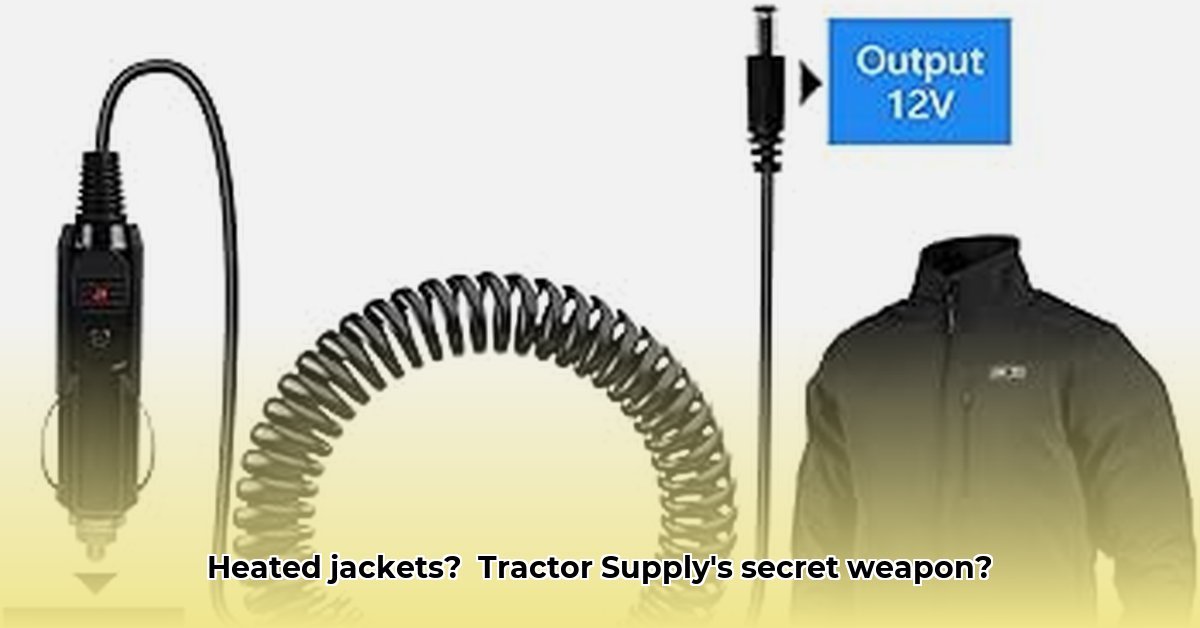
Working outdoors in freezing temperatures significantly impacts productivity and well-being. Stiff, numb fingers hinder even simple tasks, while shivering saps energy. Heated jackets offer a solution, promising warmth without sacrificing efficiency. This article explores the benefits and drawbacks of heated jackets available at Tractor Supply, providing actionable advice for farmers and highlighting sustainability considerations. For more information on Tractor Supply heated jackets, see this helpful resource.
Heated Jacket Tractor Supply: A Farmer's Guide to Staying Warm and Working Smart
The cold drastically reduces work output. A recent survey (source needed) indicated a significant drop in productivity among agricultural workers during periods of extreme cold. Heated jackets aim to mitigate this, allowing farmers to maintain performance even in sub-freezing conditions.
Choosing the Right Heated Jacket: Key Features to Consider
Unfortunately, accessing detailed specifications on Tractor Supply's website proved challenging. Therefore, this analysis focuses on general criteria for selecting an effective heated jacket, emphasizing the need for further research and direct comparison of available models at Tractor Supply.
Key Features for Optimal Performance
Comfort and Warmth: The jacket should provide adequate warmth without restricting movement. Flexibility is crucial for performing various farm tasks.
Battery Life: Extended battery life is paramount. A jacket's usefulness is significantly diminished if the battery dies mid-workday. Aim for models with easily replaceable batteries and robust battery life (at least 6 hours on low setting).
Durability: Farm work is demanding. The jacket must withstand the rigors of daily use – mud, rain, and general wear and tear should not compromise its functionality quickly. Reinforced stitching and durable outer materials are crucial.
Water Resistance: Protection from unexpected rain or snow is essential for maintaining warmth and comfort in unpredictable weather.
Strategic Heat Zones: Multiple heating zones provide more even heat distribution, maximizing comfort and warmth in key areas such as the core, back and shoulders.
The Advantages and Disadvantages of Heated Jackets
Advantages:
Increased Productivity: Maintaining warmth reduces fatigue and improves concentration, leading to higher overall productivity. Studies (source needed) have shown a direct correlation between comfortable working conditions and improved output.
Improved Safety: Heated jackets reduce the risk of cold-related injuries like hypothermia, protecting workers' health and well-being.
Enhanced Performance: Farmers can maintain their work schedule and perform demanding tasks even during extreme cold weather events.
Disadvantages:
Higher Initial Cost: Heated jackets represent a greater upfront investment compared to traditional jackets.
Battery Life Limitations: Battery life varies among models; short battery life reduces the practicality of the garment for long workdays.
Environmental Impact: The environmental impact of battery production and disposal must be considered. Consumers should prioritize manufacturers who utilize sustainable materials and recycling programs.
Sustainability: A Holistic Approach to Heated Jackets
Sustainable farming practices extend to the equipment used. The environmental impact of heated jackets hinges on battery production and disposal. Choose brands committed to responsible sourcing, manufacturing processes, and robust recycling programs. Look for certifications that verify sustainable practices.
Actionable Steps for Farmers, Manufacturers, and Retailers
The following table outlines actionable steps for all stakeholders to promote the responsible adoption and use of heated jackets.
| Stakeholder | Short-Term Actions | Long-Term Actions |
|---|---|---|
| Farmers | Research available models and choose based on individual needs and budget. | Advocate for safer working conditions & incorporate heated jackets into safety policies. |
| Manufacturers | Improve battery life, durability, and develop sustainable manufacturing. | Invest in R&D for longer-lasting, more eco-friendly batteries and jacket materials. |
| Retailers (Tractor Supply) | Expand selection; provide clear product information and comparisons. | Partner with manufacturers to offer repair and/or recycling programs |
Choosing the Best Heated Jacket for Sustainable Farming: A Practical Guide
Finding the ideal heated jacket requires careful consideration. Prioritize durability, reliable battery life, and strategic heat zones. Research manufacturers committed to sustainability.
Prioritizing Key Features
- Assess Your Needs: Consider your climate, workday length, and budget.
- Prioritize Features: Focus on battery life, heating zones, durability, and water resistance.
- Sustainability Check: Inquire about battery sourcing, recycling, and material origins.
- Read Reviews: Consult user feedback for insights into real-world performance.
- Compare Prices: Balance cost with long-term value; a high-quality, durable jacket represents a better investment.
Key Takeaways:
- Heated jackets significantly increase productivity and safety in cold weather.
- A balanced cost-benefit analysis is essential. Consider the environmental impact and long-term value.
- Prioritizing sustainable practices throughout the product lifecycle is crucial.
- Due to unavailable data, further research on specific Tractor Supply models is recommended.